Blog Archive: April 2014
Time-Lapse: Observing the Thriving Ivy on the Opposite Wall
| Digital Photography School | 15 seen
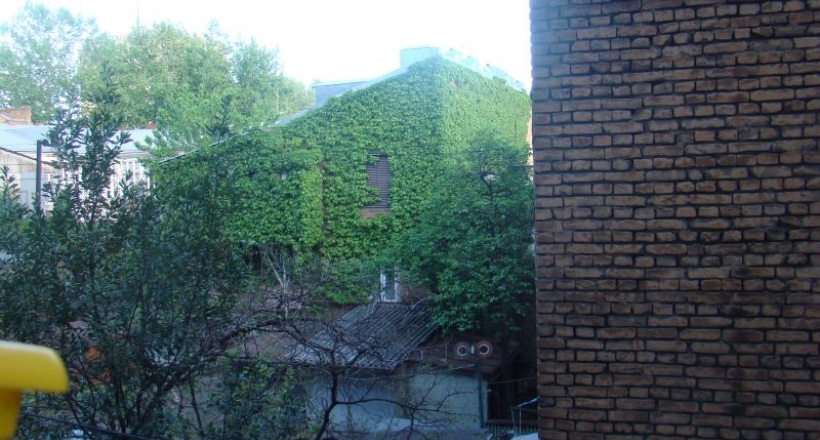
Have you ever wondered how nature changes over time? One fascinating way to witness this transformation is through time-lapse photography.
For three weeks in April 2014, I've been taking photo shoots of the wall opposite to me and observing the leaps of ivy as it thrives. Now, after capturing the growth of this plant over a period of time, I am excited to share the finale of this time-lapse experiment with you.
Time-lapse photography allows us to see the changes that happen too slowly for us to perceive with our own eyes.
In this case, the ivy's growth was captured day by day and compiled into a video, revealing the impressive speed at which the plant has grown. The time-lapse provides a unique perspective on the beauty and majesty of nature.
Time-lapse Day 1
Time-lapse Day 2
Time-lapse day 3
Time lapse day 4
Time lapse day 5
Time lapse day 6
Time lapse day 7
Unfortunately I missed some two weeks of photography here so I got a last photo from April 30, 2014
Time-lapse Day last
Romania: An Overview of its Economy and EU Membership (2014)
| Emerging Markets | 7 seen

Yesterday I took a brief overview of Moldova, and today I'm eager to dive into the neighboring country of Romania.
Romania is a full-fledged member of the European Union since 2007, together with Bulgaria, and is considered one of the poorest countries in the EU in terms of wealth.
With a population of 21.33 million people and a GDP of 169.4 billion USD in 2012, Romania's GDP per capita is 7.942 thousands USD. Although Romania is four times richer than its neighbor Moldova, it is still five times poorer than Germany.
Since becoming a member of the EU in 2007, Romania's GDP has remained unchanged, reaching its peak of 204 billion USD in 2008. While some may not be happy with Romania's decision to join the EU, it is uncertain whether the country would have fared better without it.
According to IMF predictions, Romania's GDP is expected to rise to 288.662 billion USD by 2019, a third more than it is today. Additionally, the expected GDP per capita for 2019 is $13.53, which is about half of the country's current GDP.
It has been 24 years since the fall of the Soviet Union, yet the gap between the rich and poor in Europe continues to widen. The process of developing the former Iron Curtain countries is a long and slow one, but hopefully, Romania will see continued growth in the years to come.
In conclusion, Romania has a lot of potential for growth and development, but the country must overcome several challenges before reaching its full potential.
How to Use Instagram App with GPS Offline: A Step-by-Step Guide
| Blogging | 11 seen

Instagram is a popular photo and video-sharing platform that allows users to post pictures and videos, share memories, and connect with friends and family.
However, one of the requirements of using the app is having an active internet connection. This can be a problem when you're traveling, in a remote area, or simply don’t have access to the internet. Fortunately, there are ways to use Instagram even when you don’t have an internet connection. Here’s how to use the Instagram app with GPS offline.
Download maps ahead of time: To use Instagram offline, you’ll need to have access to maps in the area you’ll be traveling in. This means you’ll have to download maps before you leave home. You can do this using a GPS app or by using the offline maps feature on Google Maps.
Turn off Cellular Data: To ensure that you only use GPS when using Instagram, you'll need to turn off Cellular Data in your phone's settings. You can do this by going to the Settings app, then to Cellular Data and toggle it off.
Use airplane mode: When you’re in an area with no internet, you can use the Instagram app in airplane mode. This will turn off all the internet-dependent features of the phone and leave only GPS active.
Take photos and videos: With GPS and camera functionalities still active, you can take photos and videos as you normally would.
Save to camera roll: Instagram will not be able to upload the photos or videos to your account since there’s no internet connection, so you’ll need to save them to your camera roll. To do this, tap on the photo or video, then tap on the Save button in the top right corner.
Post when you have internet: When you have access to the internet, go back to Instagram and upload the photos or videos you took while you were offline. You can do this by tapping on the camera icon in the bottom center of the screen, then selecting the photos or videos you want to post.
Add location: You can also add the location to your post by tapping on the “Add Location” button, then searching for the location you were at when you took the photo.
By following these steps, you can use the Instagram app even when you don’t have an internet connection. It’s a great way to ensure that you can capture and share memories from your travels, even in remote areas where internet connectivity may be limited. So, the next time you find yourself in an area with no internet, don’t let that stop you from using Instagram.
Adding CAPTCHA to Drupal 7 Webform
| Drupal Development | 55 seen
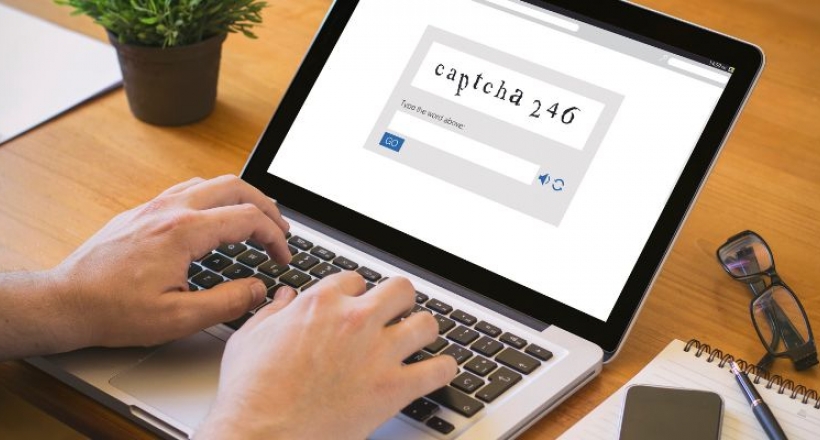
CAPTCHA is an essential tool for preventing spam and malicious attacks on your website. Adding CAPTCHA to your Drupal 7 Webform is a straightforward process that can be completed in a few easy steps.
In this article, we will show you how to add CAPTCHA to your Drupal 7 Webform to protect your website and improve the user experience.
Step 1: Install the CAPTCHA module The first step is to install the CAPTCHA module on your Drupal 7 website. To do this, go to the Drupal website and download the module. Once the module is downloaded, log in to your Drupal 7 website, go to the Modules section, and click on the Install new module button. Choose the CAPTCHA module from the list and click on the Install button to install it.
Step 2: Configure the CAPTCHA module Once the CAPTCHA module is installed, you need to configure it. Go to the Configuration section of your Drupal 7 website and click on the CAPTCHA option. You will see a list of CAPTCHA modules that you can choose from. Select the one that you want to use and configure it according to your preferences.
Step 3: Add CAPTCHA to your Drupal 7 Webform After configuring the CAPTCHA module, you can add CAPTCHA to your Drupal 7 Webform. To do this, go to the Webform section of your website and open the form that you want to add CAPTCHA to. Click on the Form settings button and select the CAPTCHA option. Choose the CAPTCHA module that you want to use and save the changes.
Step 4: Test the CAPTCHA Once you have added CAPTCHA to your Drupal 7 Webform, it is important to test it to ensure that it is working properly. You can do this by submitting the form and verifying that the CAPTCHA is working as expected. If the CAPTCHA is not working, you may need to make some changes to the configuration to get it to work properly.
In conclusion, adding CAPTCHA to your Drupal 7 Webform is an essential step in protecting your website and improving the user experience. By following these simple steps, you can easily add CAPTCHA to your Webform and ensure that your website is safe from spam and malicious attacks. Remember to test the CAPTCHA to make sure it is working correctly and make any necessary adjustments.
Discovering the Rich History and Growing Economy of Moldova
| Emerging Markets | 5 seen
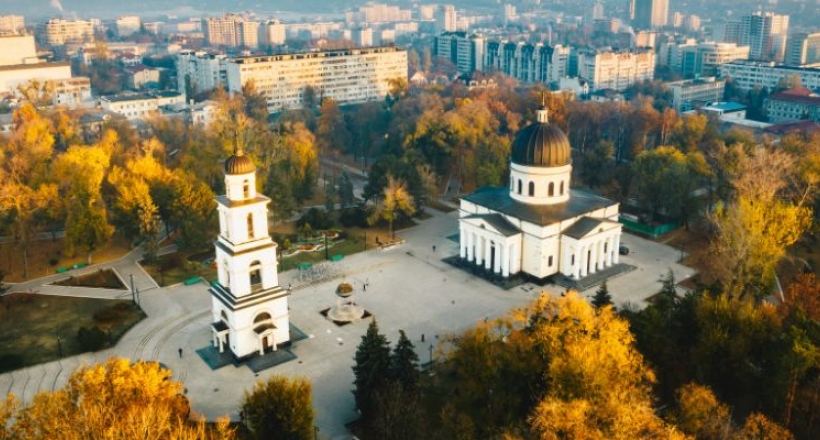
Moldova is a landlocked country in Eastern Europe, situated between Romania and Ukraine. Despite its small size and relatively low profile on the world stage, Moldova has a rich and complex history, a diverse culture, and a growing economy.
One of the key features of Moldova's history is its position at the crossroads of different empires and civilizations. Over the centuries, Moldova has been ruled by a variety of powers, including the Ottoman Empire, the Russian Empire, and the Soviet Union. This has given rise to a fascinating mix of traditions and cultural influences, with elements of Romanian, Ukrainian, Russian, and Turkish culture all playing a role in shaping Moldova's identity.
One of the most significant events in recent Moldovan history was the collapse of the Soviet Union in 1991. This marked a turning point for the country, as it transitioned from a Soviet satellite state to an independent nation. Since then, Moldova has struggled to establish a stable and prosperous society, with political and economic challenges often threatening to undermine progress.
In recent years, however, Moldova has made significant strides towards greater stability and growth. The country has implemented a range of reforms aimed at improving governance, reducing corruption, and strengthening the economy. These efforts have paid off, with Moldova recording steady economic growth and attracting increasing amounts of foreign investment.
One of the key drivers of Moldova's economy is its agricultural sector, which is well-suited to the country's fertile soil and temperate climate. Moldova is a major producer of wine, fruits, and vegetables, with exports to countries around the world. In addition, the country has a growing technology sector, with a number of start-ups and IT firms establishing themselves in Moldova's major cities.
Despite these positive developments, Moldova still faces a number of challenges. Poverty remains a significant issue, with many Moldovans struggling to make ends meet. In addition, the country continues to face political instability and corruption, with allegations of corruption and abuse of power in some areas of government.
Overall, however, Moldova is a fascinating and complex country with a rich history and promising future. As the country continues to navigate the challenges of the 21st century, it is likely to play an increasingly important role in the region and the world as a whole.
Swords, Scandals, and Swashbuckling: A Review of The Musketeers TV Series (2014)
| Documentaries | 10 seen

"The Musketeers" is a historical adventure TV series produced by the BBC. It is loosely based on the characters from the novel "The Three Musketeers" by Alexandre Dumas, set in 17th century France. The show features an ensemble cast, including Tom Burke as Athos, Santiago Cabrera as Aramis, Howard Charles as Porthos, and Luke Pasqualino as D'Artagnan. Here are some of the highlights of this exciting and engaging TV series:
Swashbuckling Action: "The Musketeers" is known for its thrilling action sequences and sword fights. The show features impressive choreography and stunts, making each episode a visual spectacle. The Musketeers are known for their bravery and skill, and they never shy away from a challenge.
Intrigue and Romance: The show is not just about sword fights and battles. It also features intricate plotlines and romantic subplots that add depth and complexity to the characters. There are political intrigues, secret societies, and hidden agendas that keep the viewers guessing.
Strong Character Development: The characters in "The Musketeers" are well-developed and multi-dimensional. Each character has their own backstory and motivations, and their relationships with each other evolve over the course of the series. From the grizzled veteran Athos to the impulsive young D'Artagnan, each character brings their own unique perspective to the show.
Historical Accuracy: While "The Musketeers" takes some liberties with the source material, it still maintains a strong sense of historical accuracy. The show portrays 17th century France in a realistic and immersive way, capturing the costumes, architecture, and cultural norms of the time period.
Humor and Wit: "The Musketeers" is not just a serious drama. It also features a healthy dose of humor and wit, making it an enjoyable and lighthearted watch. The banter between the Musketeers is entertaining and adds levity to the show.
Overall, "The Musketeers" is a well-produced and entertaining TV series that offers a mix of action, romance, intrigue, and humor. With a talented cast and engaging storylines, it is sure to keep viewers entertained from start to finish.
The Shocking Truth About Immigration in the UK: A Review of the 2014 Documentary
| Documentaries | 15 seen

In 2014, the documentary film "The Truth About Immigration in the UK" caused a stir in the UK media and politics. The documentary, produced by Channel 4, set out to investigate the impact of immigration on the UK, and the result was a nuanced and complex picture of a controversial issue.
The film begins with presenter Krishnan Guru-Murthy stating that "immigration has become one of the most divisive issues in Britain today." It then goes on to explore the various claims and counter-claims made by politicians, the media, and the public about the impact of immigration on issues such as jobs, wages, housing, and the NHS.
One of the most striking things about the film is the way in which it challenges many of the myths and stereotypes surrounding immigration. For example, it shows how the idea that immigrants are a drain on the NHS is largely a myth, and that immigrants actually contribute more to the economy than they take out in benefits.
The documentary also looks at the impact of immigration on the job market, and again challenges the idea that immigrants are taking British jobs. It shows that there is little evidence to support this claim, and that many industries rely on immigrant workers to function.
The film is not, however, a one-sided defence of immigration. It also acknowledges the very real challenges that immigration can pose, particularly in terms of housing and community cohesion. It shows how the rapid influx of immigrants into some areas can lead to tensions, and how some communities can feel left behind or forgotten.
Overall, "The Truth About Immigration in the UK" is a thought-provoking and insightful documentary that offers a more nuanced and complex picture of immigration than is often portrayed in the media and politics. It challenges many of the myths and stereotypes surrounding immigration, and highlights the need for a more informed and rational debate on this important issue.
If you are interested in learning more about immigration in the UK, or want to better understand the impact of immigration on society and the economy, then "The Truth About Immigration in the UK" is a must-see documentary.
At the end of the day, it is important to remember that immigration is a complex and multifaceted issue, and that there are no easy answers or quick fixes. But by engaging in informed and rational debate, we can work towards a more just and equitable society for all.
Watch on YouTube
How Moldova's Visa-Free Regime is Driving Economic Growth and Integration with the EU
| Emerging Markets | 9 seen
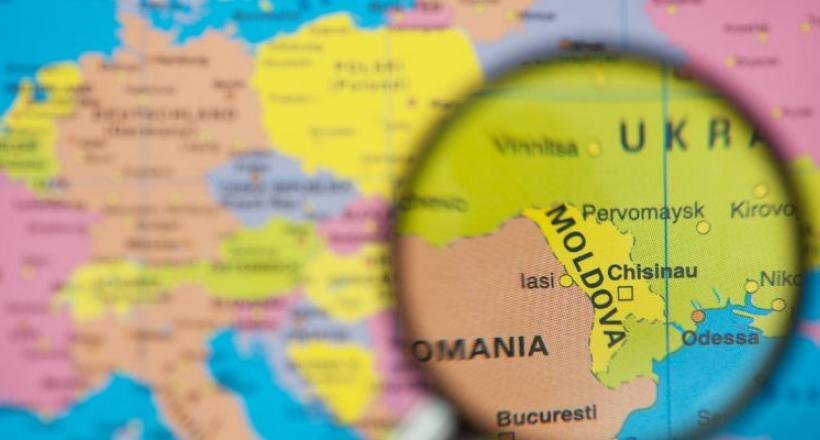
Moldova is a small, landlocked country located in Eastern Europe. Despite its size, Moldova has a rich history and culture and is home to a diverse population of over 3 million people. In recent years, Moldova has made significant strides towards greater integration with the European Union (EU), including the introduction of a visa-free regime for Moldovan citizens traveling to the EU.
The visa-free regime, which was introduced in 2014, allows Moldovan citizens to travel to the EU for up to 90 days without a visa. This has been a significant development for Moldova, as it has opened up new opportunities for trade, investment, and cultural exchange with EU member states.
One of the key benefits of the visa-free regime has been increased tourism. Moldovan citizens are now able to travel more easily to EU member states, and many have taken advantage of this opportunity to explore new destinations and cultures. At the same time, the visa-free regime has also made it easier for EU citizens to visit Moldova, which has helped to boost the country's economy and raise its profile on the international stage.
In addition to increased tourism, the visa-free regime has also had important economic and political implications. Moldova is a relatively poor country, and its economy is heavily reliant on exports to the EU. The visa-free regime has made it easier for Moldovan businesses to trade with their EU counterparts, which has helped to boost economic growth and create new jobs.
At the same time, the visa-free regime has also helped to strengthen Moldova's ties with the EU. By allowing Moldovan citizens to travel freely to the EU, the EU has sent a powerful signal of support for Moldova's efforts to integrate with the rest of Europe. This has helped to build trust and confidence between the two sides and has created a framework for further cooperation and collaboration in the future.
Of course, there are also some challenges associated with the visa-free regime. One of the most pressing concerns is the potential for increased illegal immigration and crime. To address these concerns, the EU has implemented a range of measures to monitor and regulate migration flows, including the use of biometric data and other advanced security technologies.
Despite these challenges, the visa-free regime has been a major success for Moldova. It has helped to deepen the country's ties with the EU, and has opened up new opportunities for trade, investment, and cultural exchange. As Moldova continues to move forward on its path toward greater integration with the EU, the visa-free regime will remain an important tool for strengthening these ties and building a brighter future for the country and its people.
Georgia's Political System: An Overview of its Structure and Functioning
| Living in Georgia | 59 seen
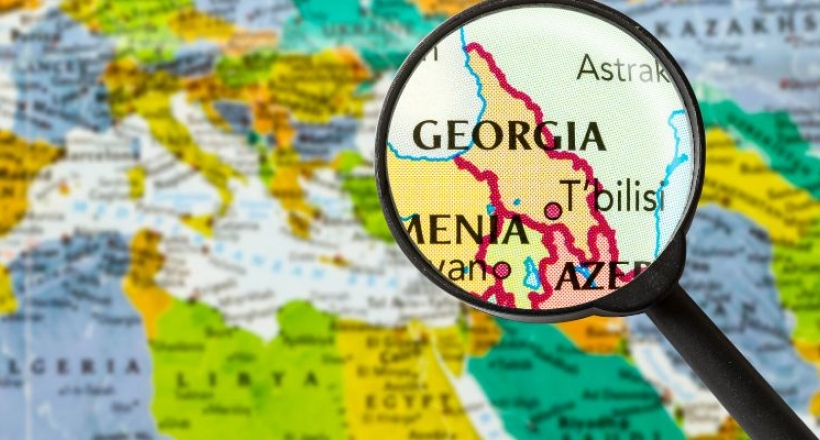
Georgia is a small country located in the Caucasus region of Eurasia, known for its rich history, culture, and natural beauty. The country's political system has undergone significant changes over the years, from being part of the Soviet Union to gaining independence in 1991 and establishing a democratic system of government.
Georgia's political system is based on a semi-presidential representative democratic republic, with the President as the head of state and the Prime Minister as the head of government. The President is elected for a term of six years and has ceremonial functions, while the Prime Minister is responsible for the day-to-day running of the government.
The Parliament of Georgia is a unicameral legislative body consisting of 150 members elected for a term of four years. The Parliament is responsible for passing laws, approving the budget, and overseeing the work of the government. The Speaker of the Parliament is the highest-ranking official in the legislative branch.
The judiciary in Georgia is independent and consists of the Supreme Court, Court of Appeals, and regional courts. The Constitutional Court is responsible for reviewing the constitutionality of laws and ensuring that they are in line with the principles of the country's constitution.
Georgia has a multi-party system, with several political parties competing for seats in the Parliament. The Georgian Dream Party, led by billionaire businessman Bidzina Ivanishvili, currently holds a majority of the seats in the Parliament and forms the government. The main opposition parties are the United National Movement, the European Georgia Party, and the Alliance of Patriots of Georgia.
Despite the progress made in establishing a democratic system of government, Georgia faces several challenges in ensuring political stability and addressing corruption, poverty, and human rights issues. The country has been engaged in a protracted conflict with the breakaway regions of Abkhazia and South Ossetia, which have been recognized as independent states by Russia but are not recognized by the international community.
In recent years, Georgia has made significant strides in improving its relations with the West and pursuing a pro-European and pro-NATO foreign policy. The country has also undertaken various reforms aimed at promoting economic growth, reducing poverty, and improving the rule of law.
In conclusion, Georgia's political system is characterized by a semi-presidential representative democratic republic, with a unicameral legislative body, independent judiciary, and multi-party system. Despite facing several challenges, Georgia has made significant progress in building a democratic and prosperous society, and is poised to play a more prominent role in the region and beyond in the coming years.
Inject Block In Drupal 7 Node With Block Inject module
| Drupal Development | 3 seen

I was looking for options to inject Google Adsense ads into my Drupal blog. There are a few modules and tactics available. But today I found an excellent module - Block Inject.
The Block Inject module allows for regions to be created and injected in the middle of chosen node types.
You can create any number of regions to inject as well as select as many node types you would like these regions to be injected in. The blocks you assign to these regions will then appear in the middle of the body field of these node types if the number of paragraphs is bigger than 2.
Download it here: Block Inject
Here is an example of injected Google Adsense into the middle of content:
I tried to install the latest dev version, but that broke things up, so I stayed with the alpha version.
Update: You might try the latest version now (This module have been updated on May 23, 2015)
If you need help with Drupal modules or Drupal website development - hire me!
Flickr vs Instagram: Which is the Best Photo-Sharing Platform for Your Needs?
| Digital Photography School | 57 seen

Flickr and Instagram are both popular photo-sharing platforms, each with its own strengths and weaknesses.
In this article, we'll take a closer look at the key differences between these two platforms to help you decide which one is right for your needs.
Flickr, launched in 2004, is a photo-sharing platform that was popular among professional photographers before the rise of social media. It offers more advanced features than Instagram, such as the ability to upload and store high-resolution images, organize photos into sets and collections, and search for images by metadata such as camera type or location.
In contrast, Instagram, launched in 2010, is a social media platform that emphasizes mobile-first, real-time sharing of images and videos. Its focus is on visual storytelling and community engagement, with features such as hashtags, filters, and Instagram Stories.
When it comes to image quality, Flickr has the edge with its ability to store and display high-resolution images. Instagram, on the other hand, is optimized for mobile devices and offers a range of filters and editing tools that can enhance the look of photos.
In terms of audience, Flickr has traditionally appealed more to professional and serious amateur photographers, while Instagram has a wider and more diverse user base that includes celebrities, influencers, and everyday users. Instagram's emphasis on social interaction and engagement, including features such as likes, comments, and direct messaging, make it a powerful tool for building a following and connecting with others in your niche or industry.
When it comes to advertising and monetization, both platforms offer opportunities for businesses to reach their target audience. Flickr offers a paid Pro subscription that removes ads and provides additional storage and analytics features, while Instagram offers paid advertising options through its parent company, Facebook.
Ultimately, the choice between Flickr and Instagram will depend on your specific needs and goals. If you're a professional photographer looking to showcase your work and connect with others in the industry, Flickr may be the better choice. If you're looking to build a following and engage with a wider audience, or if you're running a business with a visual component, Instagram may be the better choice.
In conclusion, both Flickr and Instagram offer unique benefits and features for photo-sharing and social media. By understanding the key differences between these platforms, you can make an informed decision on which one to use based on your goals and priorities.
Some magic with Drupal, Flickr and Georgia
| Drupal Development | 8 seen
Update: Further developments of both tourgeorgia.eu and instagram wall have been stopped. I have created a new Travel Map section instead.
Since I bought my first Android phone so many new thoughts and ideas has run through my head - I mean in opportunities of development. One of them I already realized - I created my custom Instagram wall, where I'm syncing all my photos taken by phone, and putting them on map. I really like this approach. Update: I have stopped further development of Instagram wall
When I first landed to Georgia, back in 2011, I wanted to start fresh, not only my life abroad, but to make some fresh start up/project. And I created Tourgeorgia. The idea behind scenes, was to make it a geo tagged. To develop portal, by myself discovering Georgia.
For example - I landed at Tbilisi airport, lets add this venue to site and so on. To add just those places, where I have been.
By now, using my Android phone, I regret I had not it 3 years ago. The things would be far better. But enough regrets.
So I took my phone, turned it in to geo tagging monster. Registered for Flickr Account. And idea is to add all those Places I have been in Georgia to map with photos. No lame Wikipedia articles about some churches or what so ever.
I stoled visual idea from Instagram:
Added some map page:
Photo view:
And its all done just by taking pictures with my phone, no need to login and upload photos.
Fur such behavior of course I have chosen Drupal, Drupal Feeds, Gmap. Flickr/Instagram accounts and of course the phone with camera and GPS.
So Tourgeorgia.eu will show you Georgia with eyes of me (Samsung Galaxy Core).
In coming days I will finalize site dosing and let's see how it works!
P.S. If you are considering a hosting for your Drupal website check out Bluehost, their shared hosting starts as low as $3.95/mo or read more about cheap Drupal hosting.
Pushing the limits - Brain power
| Documentaries | 1 seen
<p>Nice documentary about our brain power</p>
Magti 3g internet in your phone
| Living in Georgia | 15 seen
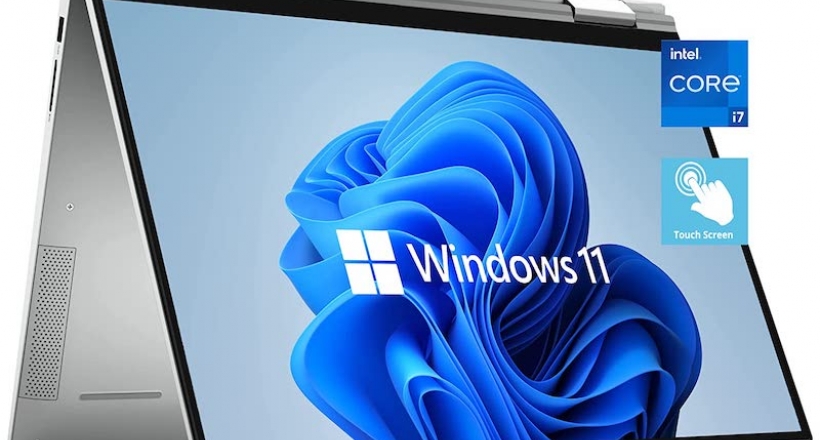
<p>Recently I bought my first Android phone, one of the first things I did - I wanted to activate internet on it, I mean mobile internet rather WI-FI.</p><p>Since I'm customer of Magti (Bani) I turned to Magti office on Rustaveli street to change my old SIM card to micro- SIM card by additional 5GEL charge. I was on rush, and I told that I will enable internet later on my phone by myself.</p><p>I then called to Magti info line, to ask for settings for my phone. Girl via phone told me that I can get 100 MB for 1 GEL for 24 hours. </p><p>It took me a while to activate all the settings. </p><p>I will not write down all these settings here, I will reference you to official Magti user guide on that:</p><p>http://www.magticom.ge/internet_setup/eng/android/</p><p>By now, I'm happy I activated 3g internet on my phone, because today electricity has lost in Tbilisi, and I turned my phone to portable Wi-Fi hotspot, and at least I can work. Speed via Magti 3G is pretty awesome.</p><p>I have heard that Beeline offers unlimited internet for 7GEL/month - I will check that in close future.</p><p>By now I'm happy with my Magti 3G internet,</p>
Import your Instagram photos to your blog using Flickr + Flickstagram
| Drupal Development | 25 seen
Recently I bought my first Android phone, and I found Instagram app really useful. What I like the most is it's mapping options, so you can add latitude/longitude auto, if your GPS is turned on.
Then I wanted to import my Instagram photos to my blog and found some problems with it. As I'm using Drupal as my blogs CMS, at first I headed to Drupal.org to search for some ready built modules, to import my Instagram photos, so I could later use views, for example, to tune things up. There are few solutions provided by Drupal community, but Instagram requires SSL, and at this stage, I'm not ready to enable some Open Source SSL. I just want a solution that works.
So then I remembered, some years ago, I had built an application with Drupal feeds module, aggregating Flickr RSS feed with location tags (latitude/longitude) - I remember there were involved some Yahoo pipes, to build that stuff. But that time, I was building a much more complicated system. Like parsing feeds for specific locations. This time I want to parse just my feeds and show my photos, both with location enabled and without it.
Luckily Instagram app allows to publish to Flickr, what's great, unfortunately, I didn't find that it's exporting to location fields as well. And then I found Flickstagram. Superb service, that allows import your photos from Instagram directly to Your Flickr account.
And then I can use Drupal Feeds, to parse my Flickr account, to import pictures from Flickr to my blog.
In the coming days, I will write a tutorial, how to import your Instagram photos to your blog using Flickr.